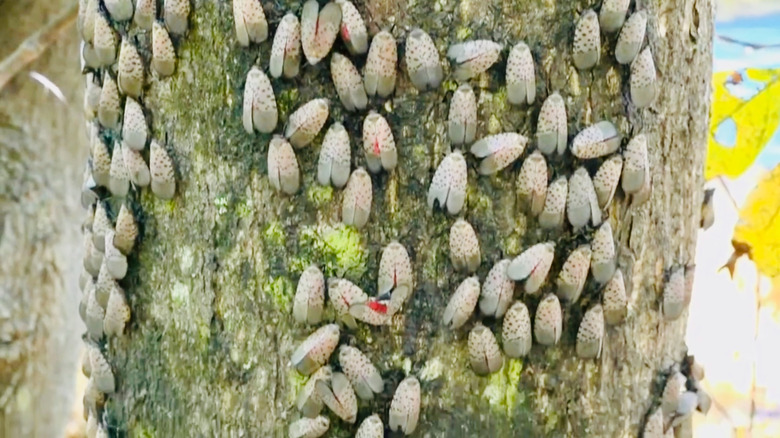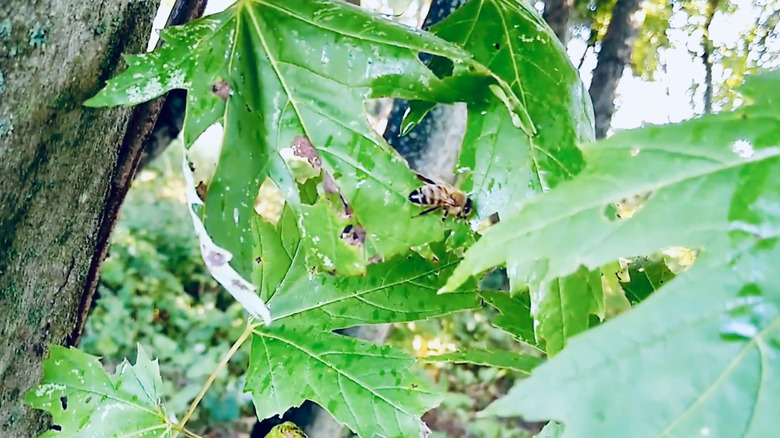The Unexpected Benefit To Having Pesky Spotted Lanternflies In Your Yard
This is a classic bad news and good news story. Spotted lanternflies (Lycorma delicatula) have been bad news in the U.S. since their accidental arrival in 2014. The insects have been identified in over 17 states, largely in the east and Midwest. They hang out on trees in huge numbers, using their piercing mouthparts to puncture plants and extract a fluid called phloem. As you learn what you need to know about spotted lanternflies, you'll discover that these pests target over 170 plants, including one of their favorites, the invasive tree-of-heaven (Ailanthus altissima).
A piece of good news has emerged in recent years, however. Beekeepers began noticing that bees were making honey into the fall, well past the time they normally would have quit for the cold season. This late season honey looks, smells, and tastes different to honey produced earlier in the season. Observation and scientific testing revealed that the bees were feeding on and making honey from something spotted lanternflies produce in abundance.
As lanternflies feed on phloem inside plants and trees, they consume far more than their bodies can use. Most of the sugary liquid passes right through them as waste — called honeydew. About once every minute, lanternflies squirt this honeydew out of their rear ends. Anyone standing under a tree infested with spotted lanternfly might even feel this sticky liquid raining down on them. The bad news is that sooty mold often grows on honeydew drips, and honeydew also attracts stinging insects, like wasps. The good news? Bees feast on the honeydew drips, too.
Bees feed on honeydew produced by spotted lanterflies
The honey bees stuff themselves with lanternfly honeydew and bring it back to their hives to make honey. Consumers have described it as thicker, darker, and smelling and tasting smokier than regular honey. Some people pick up notes of molasses, and the honey is also said to have an unusual aftertaste. The spotted lanternfly honey is safe for consumption even when pesticides have been used on the host plant. Not everyone likes the flavor of this honey, but most do, according to taste tests.
It's great news that this honey is useable (and not just by bees), but the news is even better for beekeepers — backyard and commercial alike. Their bees can access honeydew at a time when beekeepers would normally have to supply food, thus saving them money. There's more honey to harvest, too, with bees producing honey in August and September, when they normally wouldn't. The hive may also overwinter better because its stores are full.
Despite all this positive news for beekeepers and their bees, spotted lanternflies are still not good for gardens. They can cause plants to wilt, ooze, lose foliage, and produce low-volume or poor-quality crops. They lower cold hardiness, cause partial dieback, and may even kill their host. They are especially damaging to grapevines. Beekeepers and gardeners should repel lanternflies by scraping off the eggs they lay on all kinds of surfaces using an old credit card. Control the tree-of-heaven in your yard to prevent spreading this invasive lanternfly favorite and the insects themselves. Set up DIY spotted lanternfly traps before they become a nuisance. If you're an amateur beekeeper that doesn't want their bees making honey from spotted lanternfly honeydew, harvest your honey early.

